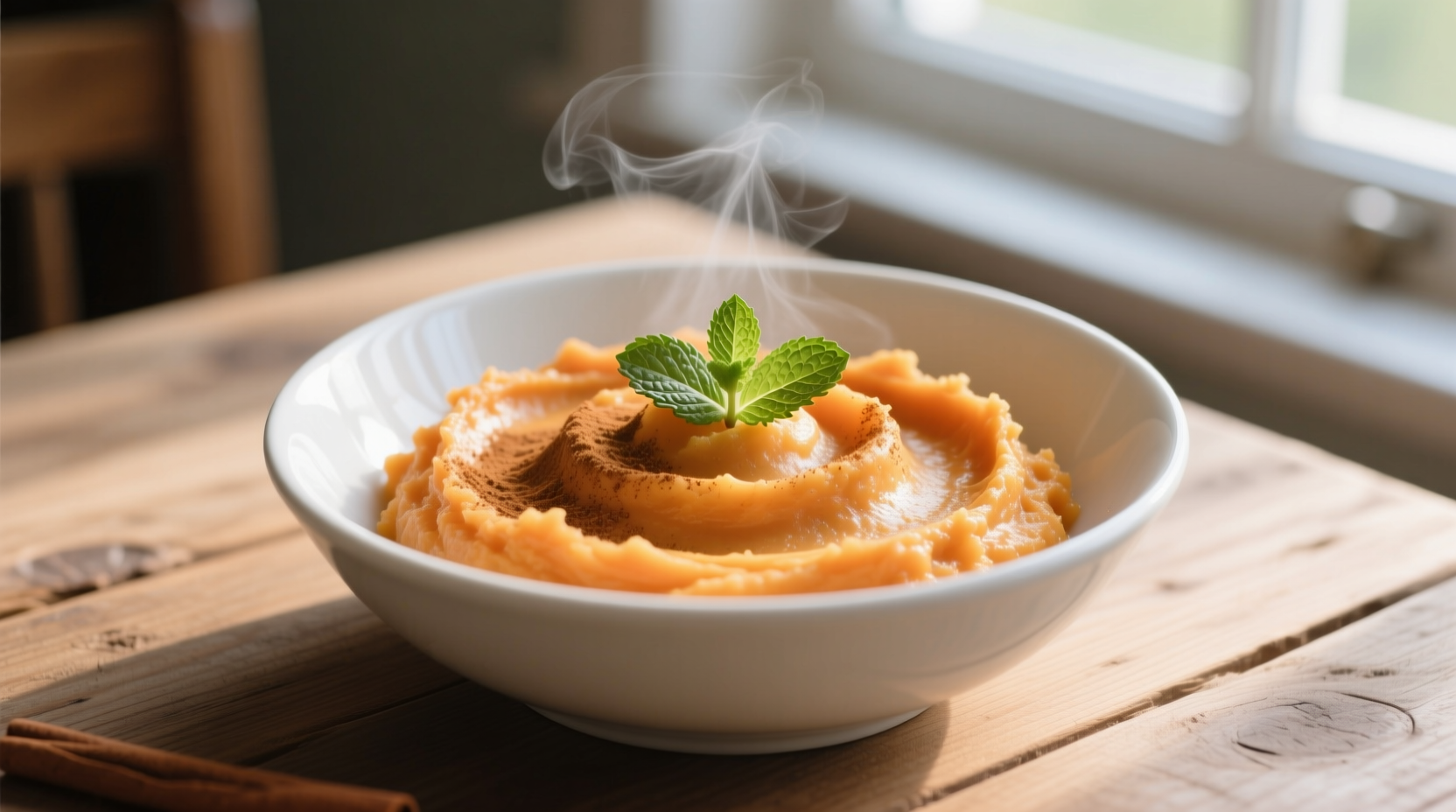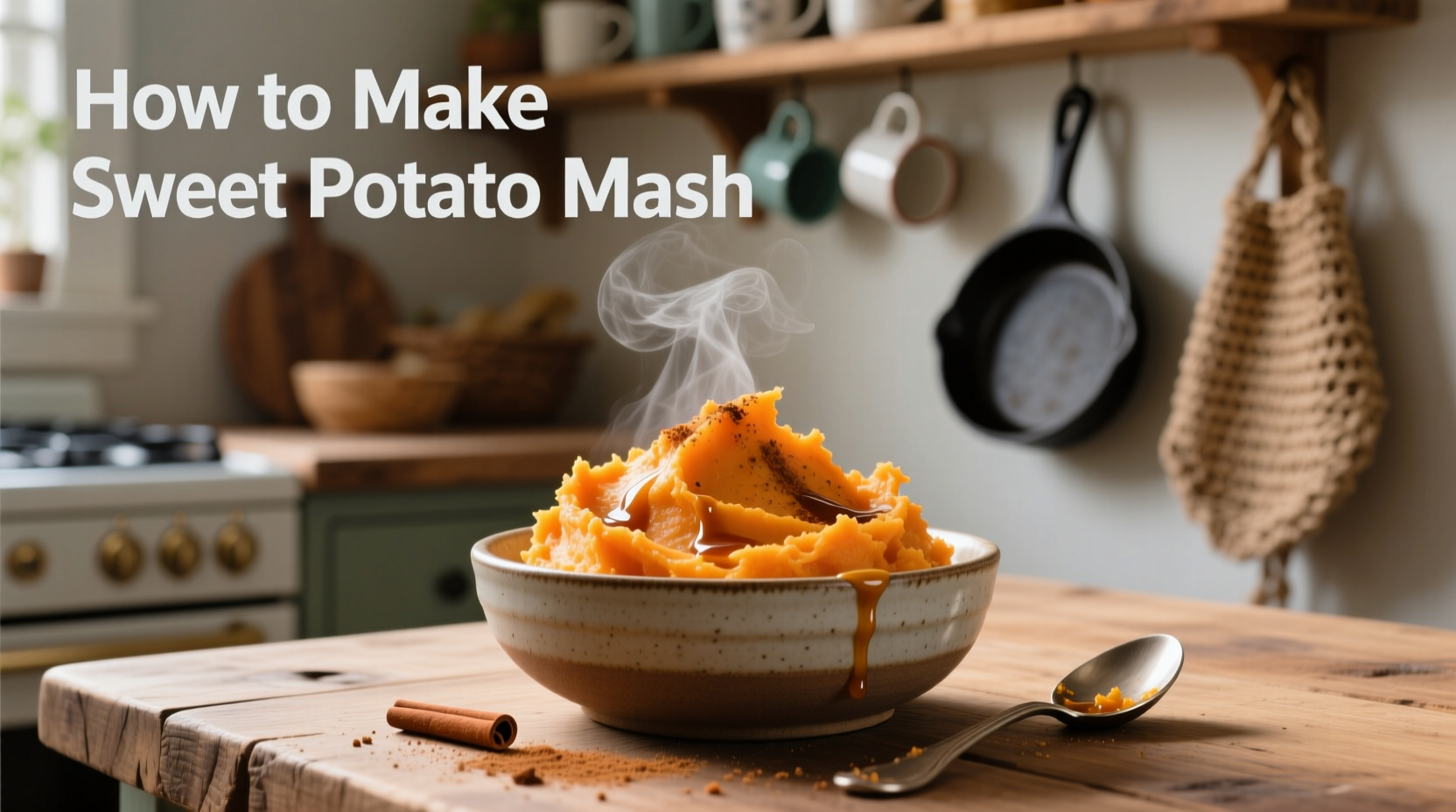Nothing beats the velvety texture and natural sweetness of homemade sweet potato mash. Unlike canned versions or rushed recipes that turn gluey, this professional technique delivers consistent results every time. Whether you're preparing a holiday feast or weeknight comfort food, mastering this foundational side dish elevates your cooking repertoire significantly.
Why This Method Works Every Time
The key to exceptional sweet potato mash lies in understanding starch behavior. Sweet potatoes contain amylopectin, a starch that becomes sticky when overworked. Our tested approach prevents this common pitfall through precise moisture management and proper mashing technique. Food science research from the USDA National Institute of Food and Agriculture confirms that controlling water content during cooking prevents starch explosion that causes gumminess.

Gathering Your Ingredients
Quality ingredients make the difference between ordinary and extraordinary mash. Choose these specific components for optimal results:
- Sweet potatoes: 2 pounds (about 3 medium) of firm, deep-orange varieties like Garnet or Jewel
- Fat component: 3 tablespoons unsalted butter (room temperature)
- Moisture: 1/4 cup warm whole milk or half-and-half
- Seasoning: 1/2 teaspoon fine sea salt plus more to taste
- Flavor enhancer: 1/4 teaspoon freshly ground black pepper (optional)
| Sweet Potato Variety | Best For Mash? | Flavor Profile | Moisture Content |
|---|---|---|---|
| Garnet | ✓ Excellent | Rich, caramel-like | Moderate |
| Jewel | ✓ Excellent | Balanced sweetness | Moderate |
| Beauregard | ✓ Good | Mild, earthy | Higher |
| Japanese | ✗ Not ideal | Chestnut-like | Lower |
Step-by-Step Preparation Guide
Preparation Phase: Setting Up for Success
Begin with proper preparation to ensure even cooking:
- Wash sweet potatoes thoroughly under cold running water
- Peel using a sharp vegetable peeler (skin contains fibers that create lumps)
- Cut into uniform 1-inch cubes—this ensures even cooking
- Place cubes in a single layer on paper towels to absorb surface moisture
Cooking Process: The Critical Moisture Control Step
How you cook the sweet potatoes determines your final texture:
- Place cubes in a large pot and cover with cold water by 1 inch
- Add 1 teaspoon salt to the water (helps season from within)
- Bring to a gentle boil over medium-high heat
- Reduce heat to maintain a bare simmer (vigorous boiling breaks down cell structure)
- Cook 12-15 minutes until fork-tender but not falling apart
- Drain immediately in a colander—do not let potatoes sit in water
- Return potatoes to the warm pot and shake gently over low heat for 1 minute to evaporate excess moisture
Mashing Technique: Avoiding the Gummy Texture Trap
This professional method prevents common texture issues:
- Transfer potatoes to a large mixing bowl
- Add butter and salt while potatoes are still hot (helps butter incorporate smoothly)
- Use a potato ricer for ultra-smooth results or a handheld masher for rustic texture
- Mash gently in one direction—over-mixing activates starches
- Warm milk before adding (cold dairy causes lumps)
- Add liquid gradually while mashing—stop when desired consistency is reached
- Taste and adjust seasoning before serving
Common Mistakes That Ruin Sweet Potato Mash
Avoid these frequent errors that compromise texture and flavor:
- Using a food processor: Creates gluey texture through over-processing
- Adding cold dairy: Causes uneven mixing and temperature shock
- Skipping moisture evaporation: Leads to watery, diluted flavor
- Over-seasoning early: Salt draws out moisture—season incrementally
- Using canned sweet potatoes: Contains added sugars and preservatives that alter texture
Variations for Different Occasions
Customize your mash while maintaining perfect texture:
- Holiday Special: Add 1/4 cup maple syrup and 1/2 teaspoon cinnamon during mashing
- Savory Version: Substitute milk with chicken stock and add 2 minced garlic cloves
- Creamier Texture: Replace half the milk with cream cheese (softened)
- Dairy-Free: Use warmed coconut milk and olive oil instead of butter
Serving and Storage Guidelines
Maximize freshness and flavor with these professional tips:
- Best served immediately while hot
- Refrigerate leftovers in airtight container for up to 4 days
- Reheat gently in microwave at 50% power with 1 tablespoon milk to restore moisture
- Freezing not recommended—starch structure breaks down causing grainy texture
- Pair with roasted meats, grilled vegetables, or as a base for shepherd's pie











 浙公网安备
33010002000092号
浙公网安备
33010002000092号 浙B2-20120091-4
浙B2-20120091-4